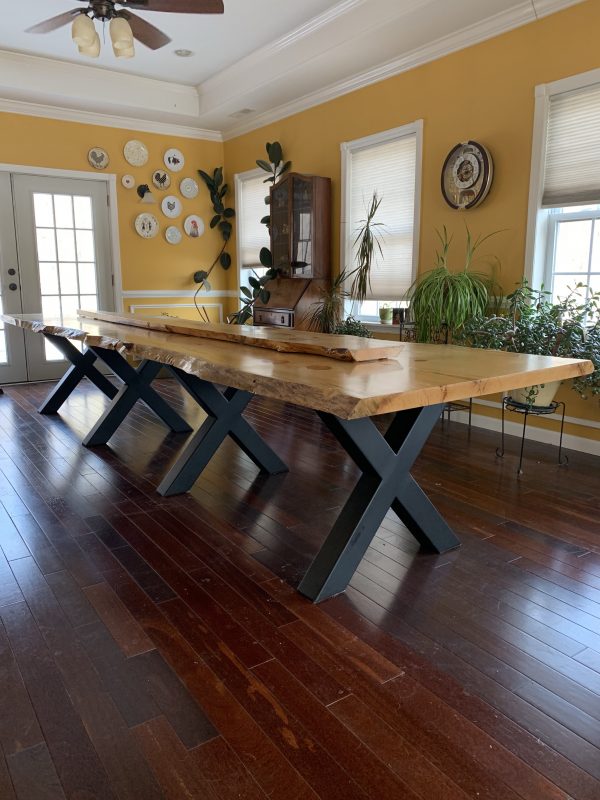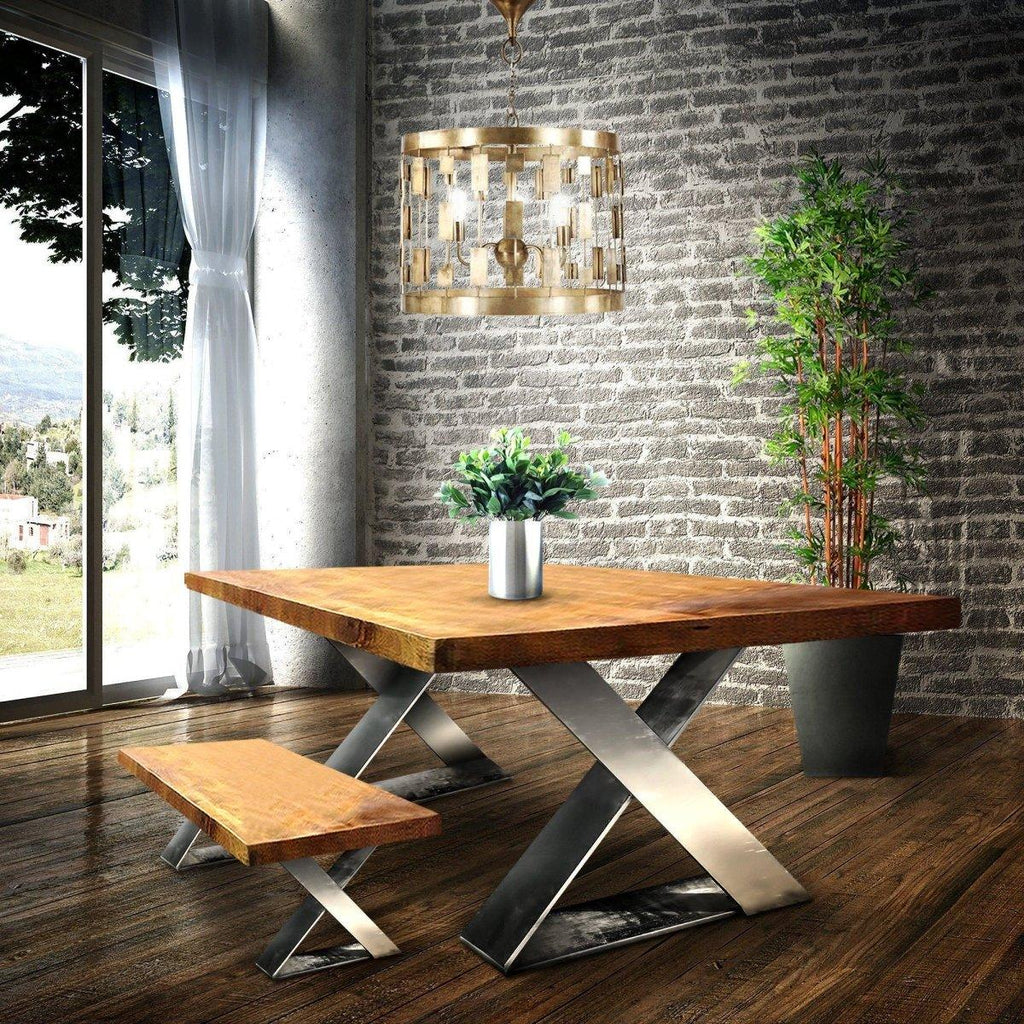From Standard to Modern: Discover the Suitable Dining-room Table Legs for Your Style
The option of eating area table legs plays a pivotal duty in specifying the general personality of your room, connecting the void in between typical workmanship and modern visual appeals. While timeless layouts such as cabriole and transformed legs evoke a sense of timeless class, contemporary styles like barrette and geometric alternatives offer a chance for striking visual rate of interest. Examining the best balance between these designs calls for a nuanced understanding of your existing décor and individual preference. As you think about these components, the inquiry continues to be: how can you perfectly integrate these diverse leg styles to create an unified dining experience?
Comprehending Table Leg Styles
The selection of dining space table leg styles can dramatically affect both the visual appeals and capability of the room. Each leg style contributes distinct visual elements and useful attributes, satisfying varied design choices and use demands. Comprehending these styles is important for choosing the best table that lines up with your general interior decoration vision.
As an example, tapered legs provide a clean, traditional appearance that can improve an area's style, while pedestal bases give stability and optimize legroom, making them excellent for smaller spaces. Hairpin legs, a trademark of mid-century modern-day style, introduce an industrial flair, enabling for a ventilated, open feeling. Trestle legs evoke rustic appeal, offering robust support and a sense of timelessness.
Wood legs can bring heat and appearance, whereas metal alternatives often share a sleek, modern ambiance. Eventually, recognizing table leg styles is necessary for creating a natural eating area that mirrors individual design while ensuring usefulness and comfort.
Conventional Table Leg Options
When picking eating room table legs, conventional choices usually embody classic style and workmanship. These designs mirror a rich heritage and a commitment to top quality, making them optimal for those who appreciate classic visual appeals.
One of the most iconic standard leg designs is the cabriole leg, characterized by its elegant bent form. This style frequently includes decorative makings and is most generally found in Queen Anne and Chippendale furniture. One more popular alternative is the transformed leg, which flaunts a series of smooth, rounded forms that give a classic appearance while maintaining security.
Furthermore, the straight leg, while easy, provides a durable and unadorned structure that can mix flawlessly with a selection of tabletop designs. For those attracted to ornate describing, claw-and-ball feet legs evoke a sense of grandeur and can function as a magnificent focal point in any type of dining space.
Last but not least, pedestal bases, although not purely legs, give an alternate standard alternative that permits for adequate legroom and can be wonderfully carved. Each of these typical leg designs adds to the general ambiance of an eating space, weding function with aesthetic appeal.

Modern Table Leg Styles
Modern table leg layouts use a diverse variety of styles that highlight clean lines and innovative products. These designs often prioritize capability while functioning as striking focal factors within a dining room. Minimalist aesthetics prevail, with legs crafted from products such as metal, glass, and crafted timber, which add to a modern and airy feeling.
One prominent layout is the hairpin leg, identified by its slim, tapered framework that provides stability without frustrating the tabletop (dining room table legs). This design is typically found in mid-century contemporary furnishings and can easily enhance numerous table shapes. One more fad is using geometric shapes, where legs may handle asymmetrical or angular forms, adding aesthetic passion and visit this site right here a touch of virtuosity

Blending Styles for Unique Areas
Typically, property owners seek to create unique eating rooms that show their personal style by mixing different design aspects. This technique enables for the consolidation of diverse aesthetics, causing an unified yet distinct atmosphere. For example, coupling a rustic wood table with sleek, modern-day steel legs can produce an appealing contrast that boosts the space's total allure.
Additionally, incorporating vintage table legs with modern tabletops can stimulate a sense of background while maintaining a contemporary sensibility. Such mixes not only display individual preference but likewise urge imagination, allowing homeowners to curate an area that really feels both personal and welcoming.
Color plays a critical function in this mixing process; selecting table legs that enhance or contrast with the existing color system can enhance aesthetic rate of interest. For instance, whitewashed legs can soften the boldness of a dark table surface, developing a balanced aesthetic.
Tips for Choosing the Right Legs
Choosing the right table legs is vital for achieving both performance and visual allure in your dining space. Begin by taking into consideration the overall style of your space. Typical this contact form settings benefit from legs that feature detailed carvings or turned styles, while modern areas might ask for sleek, minimalist styles.
Next, examine the elevation and security of the legs. dining room table legs. Conventional eating tables vary in between 28 to 30 inches in elevation, so ensure the legs complement this measurement for comfort. Furthermore, durable products, such as wood or metal, can boost stability and longevity
Evaluate the leg shape as well-- options include directly, tapered, or stand layouts. Straight legs use a timeless appearance, while conical legs can add a touch of elegance. Pedestal bases offer enough legroom and are suitable for smaller sized areas.
Verdict
In recap, picking the suitable eating space table legs calls for mindful factor to consider of both typical and modern-day styles. Conventional choices such as cabriole and turned legs offer classic sophistication, while contemporary styles like hairpin and geometric shapes give a modern touch. By balancing leg style, elevation, and product with the overall décor, a natural and welcoming environment can be achieved. Inevitably, the picked table legs must show the desired visual, improving the eating experience within the space. important link
The range of dining space table leg styles can substantially influence both the aesthetic appeals and functionality of the area. Ultimately, comprehending table leg designs is important for creating a natural dining location that reflects personal design while ensuring usefulness and comfort.One of the most famous traditional leg styles is the cabriole leg, identified by its stylish curved shape. Straight legs supply a classic look, while conical legs can add a touch of style.In summary, choosing the excellent dining space table legs calls for careful factor to consider of both modern-day and traditional styles.